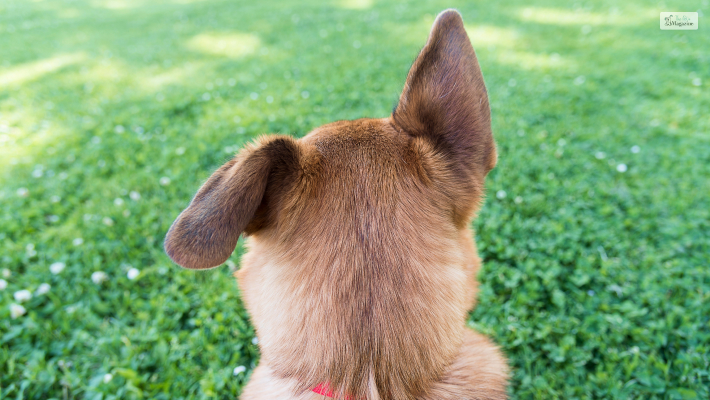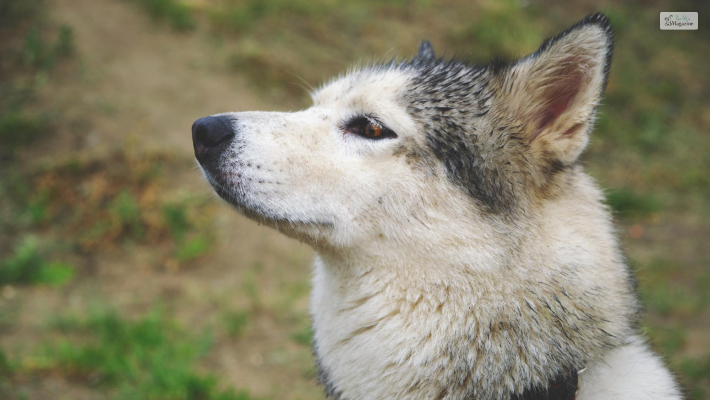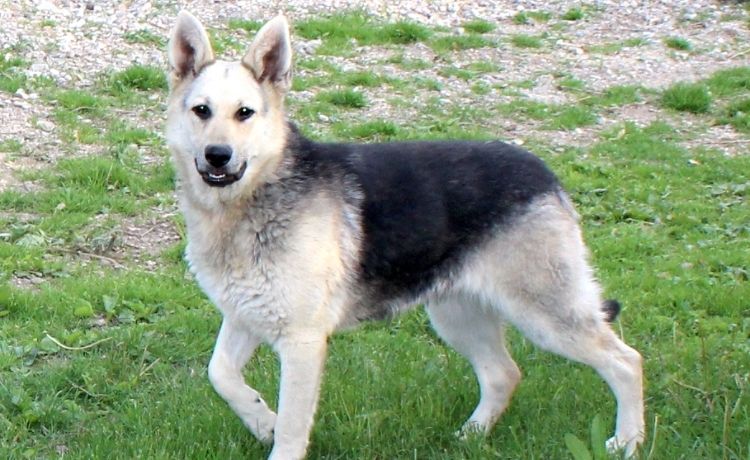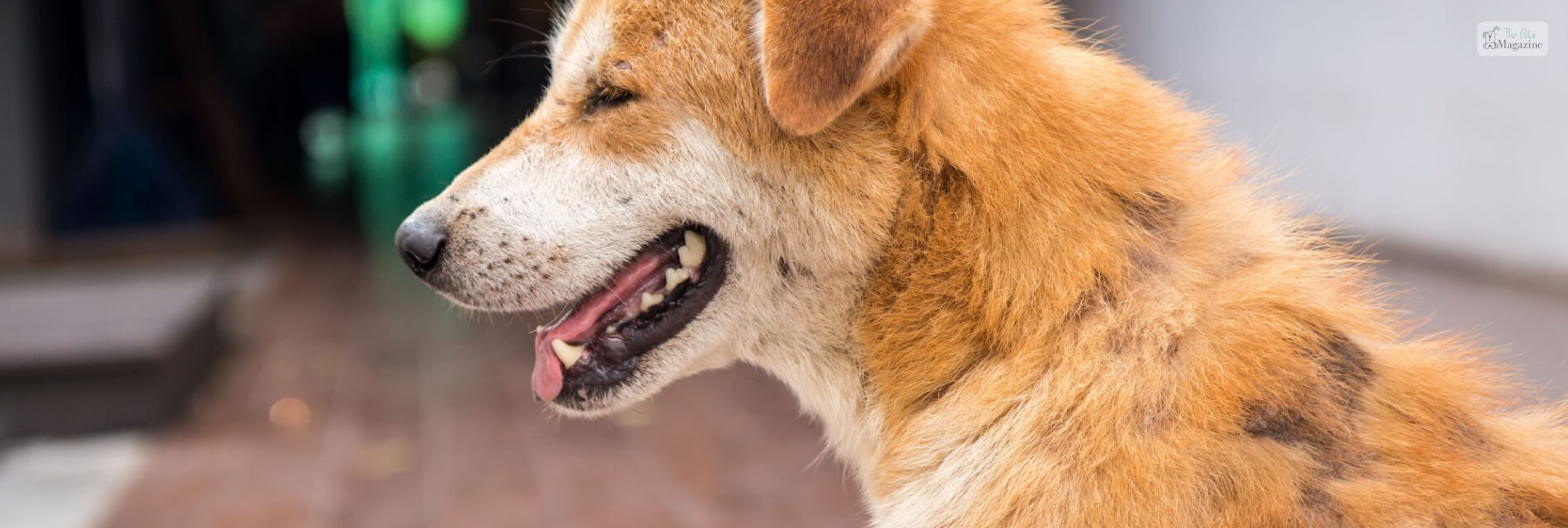Understanding Your Dog’s Mood: A Guide to Interpreting the Dog Ear Positions Chart



Dogs are our babies, and we love them to bits, but let’s be honest, sometimes it becomes difficult to understand what they are trying to tell us or how they are feeling. It can be frustrating, especially if they have been barking or howling for a long time at nothing in particular.
Don’t give up just yet! There’s a way for you to know what your pup is trying to tell you without you having to resort to barking back at your dog. Your pups’ body language is the key to understanding what is going on in their mind.
Dogs are intelligent animals. Over the years, they have learned to communicate their feelings using different body parts like the tail, ears, and facial expressions. But more than anything else, the ear position is one of the best ways to get insight into your dog’s mood and mindset.
In this article, we will explore how to interpret your dog’s body language, especially the different dog ear position meaning. It will enable you to strengthen your bond with your canine companion through a deeper understanding of their many different moods. We will even provide you with a dog ear positions chart.
Why is it essential to understand a dog’s body language?
But first, let us see why it is important for you to interpret your dog’s body language correctly. First and foremost, understanding your dog’s language in any situation will help keep everyone safe. By everyone, we mean you, your dog, other people around you, and other dogs.
Let us explain this with an example. You are at a dog park with your dog. Another dog is approaching you, whom your dog may consider to be a threat. When dogs feel threatened, the hair on their back rises.


But if you don’t know how to read a dog’s body language, you will miss this sign and let the other dog come closer. Now this may lead to your dog attacking the other dog, and if the other dog also retaliates, both dogs may get seriously hurt. Hence, as a responsible pet parent, you must learn how to read your dog’s body language.
Second, it will prevent both you and your dog from experiencing unnecessary stress. Stress is as bad for your dog as it is for you. Now that you know why it is essential for you to interpret your dog’s body language, let’s move on to learning more about a dog ears position meaning. You can also check the dog ear positions chart to quickly know the different dog ears meaning.
A guide Interpreting Dog Ear Positions
Here are the most common dog ear positions –
Ears in a neutral position


When a dog’s ears are in a neutral position, it means that it is in a position where it naturally should be. This is the most common position that your dog’s ears should be in when he/she is at home. This means that your dog feels completely relaxed; they are not doing anything or feeling scared or threatened.
Lopsided ears
If your dog’s ears are in a lopsided position or one ear is drooping a bit low compared to the other, then it may be a cause for concern. If your dog has a lopsided ear, is feeling restless, shaking their head excessively, and trying to scratch their ears a lot, it generally means that your dog has an ear infection.


Take your dog to the vet for an ear check-up. Your vet can also recommend suitable medicines and/or ear-cleaning products for your dog. However, a lopsided ear is not always caused due to an ear infection. Hematoma, bite wounds, and parasites may also lead to lopsided ears in dogs.
Pricked up Ears
When your dog’s ears are pricked forward, it means they’re focused on something that’s caught their interest. This alert and attentive ear position usually signals curiosity, excitement, or anticipation.


For instance, when you call your dog’s name, and their ears perk up, it means you’ve got their attention and are eager to hear what you have to say next. When a noise catches their interest, like a knock at the door or the jingle of car keys, their ears will prick forward as they listen intently to determine the source of the sound.
Remember that forward-facing ears do not always signal positive emotions in dogs. It mainly depends on the situation. So, check your dog’s body language, such as a relaxed, open mouth with a slightly protruding tongue, a wagging tail, and a willingness to approach to confirm your dog is feeling good.
Perked ears can also signify alertness in dogs. Your dog may have heard a suspicious sound and is surveying the area for any unusual sights or sounds. Don’t worry – as long as his body remains relaxed, perked ears alone usually do not indicate aggression or fear.
However, if their ears are angled forward, but their tail is standing straight up or in a horizontal position, mouth closed, body tense, and intensely staring at a particular object, person, or animal, it signifies that they are ready to attack or give chase.
Sometimes dogs will have one ear up and one ear down or flopped to the side. This usually means they’re still paying attention but a bit more relaxed. The ear position can change quickly though, so look for other signs to determine your dog’s mood.
Bear in mind that some dog breeds never really have pricked-up ears due to their body structure. This includes Cavalier King Charles Spaniel, Poodle, Basset Hound, Dachshund, and Beagle, among others. When these dogs feel anxious or aggressive, their ears are pulled back against their head.
Flattened Back Ears
When you see your dog’s ears flattened against his head, we are sure you have probably wondered what does it mean when a dogs ears are back. It usually means he’s feeling fearful, anxious, or submissive. We have explained all these situations in detail below:


Anxiousness
If his ears go back when he’s in a new place or situation, like the vet’s office or when new people come over, it’s likely a sign of nervousness or anxiety. Your pooch is probably confused about the situation and wants to appear less threatening. In this situation, you should try reassuring your dog with calm, gentle pets and a relaxed, confident presence. This can help ease his anxiety and make the experience more positive. You can also try medications like trazodone for dogs.
Submissiveness
When meeting other dogs or people, especially more assertive ones, your dog may pull his ears back to show he means no threat or challenge. It’s his way of avoiding direct eye contact and appearing less confrontational.
Fearfulness
Flattened ears accompanied by a tucked tail, dilated pupils, trembling, fast breathing or trying to appear smaller can indicate fear in dogs. Loud noises, unfamiliar people or dogs, or a past negative experience may trigger this response. When this happens, gently reassure your beloved pooch by petting him slowly. Also, offer treats, toys, or walks to help him/her shift into a more positive emotional state once he or she has calmed down.
Aggressive
If your dog’s ears are flattened while he’s also growling, showing his teeth, or has a stiff body, he’s likely feeling aggressive. This could happen if he perceives a threat to himself, his home, or his family.
Flattened ears do not always mean that your fur baby is anxious, scared, or submissive. If your dog’s ears are pulled back but not all the way to the back of his head, it can mean that your dog is feeling disappointed, sad, or bored. Hence to properly understand dogs ears back meaning pay close attention to the context and other body language signs to determine the underlying emotion.
Dog Ear Positions Chart
Moods of a dog according to the position of its ears have been shown in the dog ear positions chart below:


| Position of the ear | Meaning/Mood of the dog | Simultaneous behavior |
| Ears are in a neutral position | The dog is feeling calm and comfortable | Relaxed body movement |
| Ears are perked up and pointed forward. | The dog is fully alert and ready to either attack or chase | Completely tensed body, raised hackles, stiff tail (either pointed upward or in a horizontal position), an intense stare, the mouth may be closed or growling |
| Ears perked up, but no pointed forward. | The dog is alert, attentive, or excited. | Relaxed body movement, tail either wagging or in a neutral position, open mouth, eyes focused on what caught their interest |
| Ears are flattened back against the head. | The dog is feeling scared, submissive, or anxious. | Lowered tail tucked inside the two back legs, cowered position like lying down, not making eye contact, shaking or crying |
| Flattened ears but not completely against the side of the head | The dog is disappointed. This can also sometimes mean that the dog is sad, depressed, or bored. | Low energy, refusing food and/or treats, eyes appearing smaller than usual, whining or whimpering, change in behavior or sleep pattern |
| Lopsided ears | Ear infection or other medical issues | Continuous head shaking |
This chart only gives you a general idea of what different dog ear positions mean. So if you want to know about the body language and ear positions of a specific dog breed, such as dog ear positions chart pitbull, you can ask your vet to provide you with one.
How To Clean Your Dog’s Ears At Home
Since your dog’s ears are key to understanding their moods, it is essential that you clean the ears on a regular basis to prevent wax and debris build-up as it can lead to infection.
Here is a detailed guide on how to clean them at home:
Step 1: Gather the supplies.
You will need a dog-friendly ear cleaner which can be store-bought commercial ear cleaner or olive or coconut oil. Also, collect cotton balls or gauze. You can also use a soft cloth or a paper towel, but avoid using cotton-tipped swabs or anything with a pointed tip, as these can damage your dog’s ear canal or push dirt and debris further into the ear. You will also need a clean dry towel.
Step 2: Prepare your dog for the ear cleaning
To make the ear-cleaning process easier and more comfortable for your dog, you should:
- Choose a quiet and well-lit place where you and your dog can sit comfortably. You may want to place a towel or a mat on the floor to protect it from any spills or stains.
- Calm your dog down and praise them for being a good boy or girl. You can also give them a treat to make them more relaxed and cooperative.
- Gently lift one of your dog’s ears and examine the inside of the ear flap. If you see any dirt or wax, you can proceed to the next step. If the ear looks clean and healthy, you can skip the cleaning and move on to the other ear.
Step 4: Apply the ear cleaner and massage the ear
To clean your dog’s ears, you should:
- Dip a cotton ball or gauze into the ear cleaner and squeeze out the excess so that it is wet but not dripping. Alternatively, you can wrap a piece of gauze loosely around your pointer finger and dip it in the ear cleaner.
- Gently swab the inside of your dog’s ear flap with the cotton ball or gauze, removing all dirt and debris you can see. Do not insert the cotton ball or gauze too far into the ear canal, as this can cause damage or discomfort. Clean gently, as the skin can be easily broken. Vinegar and alcohol can sting broken skin2.
- If your veterinarian advises, or if your dog’s ears are very dirty and packed with wax, you can use the ear cleaner to irrigate or drench the ears. This should remove much of the sticky thick material from the ear canal. To do this, you should:
- Insert the tip of the ear cleaner bottle into the ear canal, being careful not to insert it too far.
- Squeeze the bottle to release the ear cleaner into the ear canal. You can fill the ear up with the solution until it overflows a bit.
- Massage the base of the ear for about 30 seconds to help the cleaner pass into the ear canal and loosen the dirt and wax.
- Let your dog shake their head to expel the excess solution and debris from the ear canal.
Step 5: Wipe away the excess solution and debris
To finish cleaning your dog’s ears, you should:
- Use a fresh cotton ball or gauze to wipe away any excess solution, dirt, or wax from the ear flap and the entrance of the ear canal. Do not push the cotton ball or gauze too deep into the ear canal, as this can cause damage or discomfort.
- Use a clean, dry towel to gently pat your dog’s ears dry. Do not rub the ears, as this can cause irritation or infection.
- Repeat the process for the other ear, using fresh cotton balls or gauze and a clean towel.
After you are done with the ear cleaning, don’t forget to praise your dog and give them a treat for being a good boy or girl. You can also play with them or cuddle with them to make them feel more relaxed and happy.
Recap!
In the beginning, you may get confused between all the ear positions and will be unable to interpret them correctly.
But don’t worry! As you get to know your faithful friend better, you’ll become fluent in the language of their ears. Understanding dog ear positions chart and their body language and facial expressions will help strengthen your bond and allow you both to communicate better.
Up Next
👉 How To Relieve Dog Period Cramps: 7 Points To Know
👉 The Ultimate Dog Ear Wax Color Chart: How to Keep Your Pup’s Ears Healthy








Leave A Comment